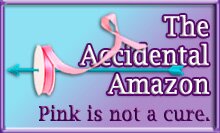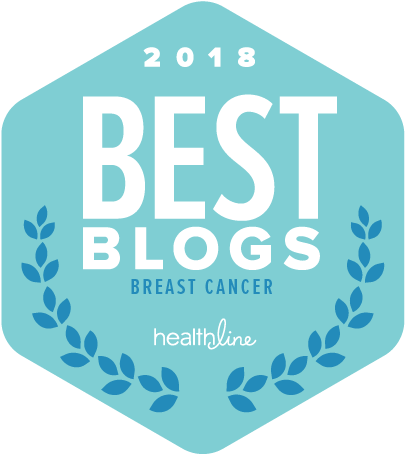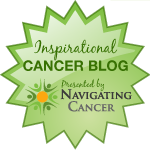There Is No ‘After’ After Breast Cancer

Last week, before the start of October, I watched a film called a loving tribute about Gilda Radner. A comedic genius, she was the first person hired years ago to be part of the cast of a new NBC show called Saturday Night Live. I can still do a creditable imitation of one of her most famous characters, Roseanne Roseannadanna, whose perennial tagline, “It’s always something,” later became the title of Gilda’s memoir, in which she described her experience with ovarian cancer. At one point in the film, you hear Gilda singing a ditty she made up to help her get through treatment. The lyrics express a sentiment many of us who’ve been treated for cancer can relate to when we are scared, but hoping for the best:
I am well, I am wonderful, I am cancer free.
No little cancer cell is hiding inside of me.
But if some little cancer cell is sneakily holding on,
I’ll bash and beat its fucking head and smash it till it’s gone.
In September, 1988, she was told her cancer was in remission, but by December, it had returned. On May 20, 1989, she died of Stage IV ovarian cancer at age 42.
Ten Years After
In July, 2008, I was first told my biopsy was positive for breast cancer. Last week, on September 24th, I had my “ten years after” mammogram. I had to wait an entire week before I got the results. I suppose it was fitting to watch “Love, Gilda” while I was waiting. Finally, on October 1st, this past Monday, I was told the mammogram was negative. I got a written report confirming this, but also stating that my breast tissue was found to be dense this year. It doesn’t say how dense. It only makes a non-committal statement, with no recommendations. Now, I have to chase up a copy of the actual radiologist’s report to find out what density rating I was given. Further diagnostic imaging is often recommended for significantly dense breast tissue because it tends to hide cancer and make it hard or impossible to detect on a mammogram, even on a tomography-assisted 3D mammogram, like I got. The last time I had a similar experience was 2012, and my surgeon sent me for a follow-up breast MRI. That MRI was also, fortunately, negative, but getting it was a memorably stressful experience. Frankly, I can’t even wrap my head around dealing with this possibility right now, so I haven’t yet gone to get a copy of the full report.
On October 1st, the same day I was told my latest mammogram was negative, I found out that a friend, sister blogger, and breast cancer activist had just died of metastatic breast cancer. In the past week or two, I’ve gotten a lot of bad cancer-related news involving friends. One friend’s daughter, whose leukemia was in remission, recently found out it had returned. This same friend’s sister died of metastatic breast cancer right before Christmas in 2015, so she, like me, is not a fan of the pinkified merchandising of breast cancer in October. A few days ago, another friend with metastatic breast cancer took a turn for the worst because her chemo is no longer working. Yet another friend who, like me, had been treated for breast cancer ten years ago, found out two days ago that she has bone mets in her pelvis. Today happens to be the birthday of yet another activist/blogger/advocate I knew who died of metastatic breast cancer last year. And finally, I got an email telling me about a memorial service that will take place next weekend, the day after Metastatic Breast Cancer Awareness Day, for another dear friend who died of MBC almost a year ago.
I could go on. And on. The fact that it’s now “breast cancer awareness month” is so beyond redundant and pointless for me these days, that after blogging for almost ten years, I don’t think I can say anything else that I haven’t said already. Metastatic breast cancer continues to kill about 40,000 women and men in the U.S. every year. Breast cancer is notably sneaky and can metastasize decades after it is initially treated, no matter what stage one was first diagnosed with, including Stage 0, also known as DCIS. We are none of us out of the woods. Ever.
Add to that the fact that the political climate in this country is deeply and alarmingly polarized. Indeed, some of the actions and beliefs of our so-called leaders are outright threatening to women and to every aspect of our lives and health.
Is it any wonder that, after long, deep self-reflection, I had to conclude that my depression, which has been at bay without medication for about five years, has returned? And my fatigue, which I thought was finally manageable, has worsened in recent months. So, I’m back on the medications I used to take. And they are helping. But getting through each day is still a slog.
So, no, even after ten years of being NED, I’m not finding it easy to cope right now. The last thing I want to do today is go out and get a copy of the radiologist’s report on last week’s mammogram, to find out exactly how dense my breast tissue was perceived to be this time around, and then to contemplate whether or not, despite the negative mammogram, I need to go talk to one of my doctors about getting another breast MRI.
I imagine that there are people who feel like throwing a party when they are still NED ten years after they were first treated for breast cancer. I wish I could say I’m one of them. Instead, I’m once again realizing that there really is no such thing as “after” after breast cancer. The Stalker stalks forever.






